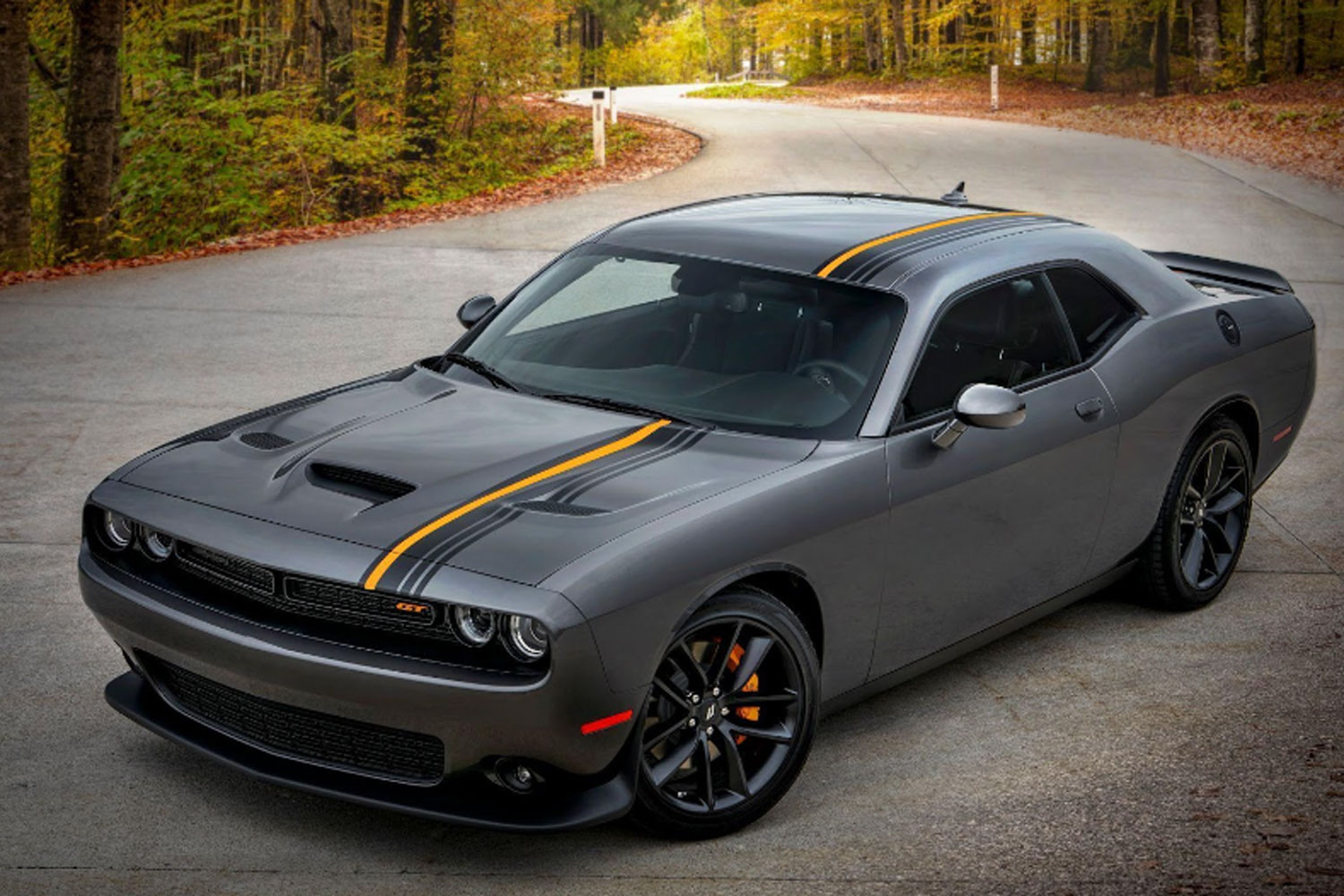What Is the Gas Guzzler Tax?
In 1980, America began taxing cars with excessive fuel consumption. Today, the penalty is practically obsolete.
 Cadillac
Cadillac
First implemented on 1980 models, the gas guzzler tax levies a fee on new cars that don’t meet a minimum fuel economy based on the Environmental Protection Agency’s (EPA’s) test procedures. The program began as part of the Energy Tax Act of 1978 to encourage development of more fuel-efficient vehicles. Of course, it also aimed to incentivize the purchase of more fuel-efficient cars by American consumers — or at the very least discourage the purchase of gas guzzlers.
How Does the Gas Guzzler Tax Work?
The tax is levied on the sale of new passenger cars with poor fuel economy, though the EPA defines that threshold using a regulatory mpg number — not the values you see on a new car’s window sticker. Cars that emerge from this calculation rated at under 22.5 mpg trigger the tax, and the tax increases as the fuel economy plunges.
SUVs, pickup trucks, commercial vehicles, and minivans are exempt from the gas guzzler tax because they are classified as light trucks, a segment that was mostly made up of commercial vehicles when the law was written. Used cars are also not subject to the tax, whether sold at a dealership or privately. The tax is paid by the automobile manufacturer or importer to the Internal Revenue Service, but the cost is passed onto the buyer. It is listed on the window sticker as an additional charge on top of a vehicle’s base price.
How Much Is the Gas Guzzler Tax?
The tax starts at $1,000 for vehicles with a regulatory fuel-economy rating between 21.5 and 22.5 mpg, and the penalty increases incrementally for cars with worse fuel economy. Cars tested at 12.5 mpg or less are charged $7,700 for the gas guzzler tax.
Gas Guzzler Tax Fees
| Regulatory Combined Fuel Economy | Tax |
| 22.5 mpg or more | No tax |
| 21.5-22.4 mpg | $1,000 |
| 20.5-21.4 mpg | $1,300 |
| 19.5-20.4 mpg | $1,700 |
| 18.5-19.4 mpg | $2,100 |
| 17.5-18.4 mpg | $2,600 |
| 16.5-17.4 mpg | $3,000 |
| 15.5-16.4 mpg | $3,700 |
| 14.5-15.4 mpg | $4,500 |
| 13.5-14.4 mpg | $5,400 |
| 12.5-13.4 mpg | $6,400 |
| Less than 12.5 mpg | $7,700 |
 Dodge
Dodge
Which Vehicles Are Subject to the Gas Guzzler Tax?
Cars currently on the market that carry the tax include exotic sports cars like the Bugatti Chiron, sports sedans like Cadillac’s CT5-V Blackwing, the Hellcat editions of the Dodge Charger and Challenger, and large luxury cars like the Rolls-Royce Phantom. This list has diminished over the years for two primary reasons: Many automakers have stopped developing cars in favor of SUVs and pickups, and fuel economy has steadily improved in the decades since the gas guzzler tax was enacted.
An example that falls into the heaviest $7,700 tax bracket is the aforementioned Bugatti Chiron Pur Sport. Cars pinched at the $2,600 level include the Ford Mustang GT500 (17.9 mpg using the gas-guzzler methodology) and the Rolls-Royce Ghost and Cullinan (both at around 18 mpg). The Dodge Challenger SRT Hellcat Widebody automatic posts 19.2 mpg, for a $2,100 gas guzzler tax fee.
Does the Gas Guzzler Tax Work?
While the fuel economy of new vehicles has improved since the gas guzzler tax went into effect in 1980, that’s more likely due to Corporate Average Fuel Economy standards, a separate regulation in which fines are paid directly by the automaker.
The positive effects of the gas guzzler tax on overall fuel economy are questionable. While the law was intended to steer carmakers and car buyers toward vehicles that are more miserly on fuel, significant loopholes remain open. Pickups, SUVs, and minivans — even the least efficient of these vehicles — aren’t subject to the tax. Moreover, the current tax rates have been in effect since 1991, which means the penalties have become less severe as inflation has reduced the purchasing power of a dollar in the past three decades.
Written by humans.
Edited by humans.
 Jim Resnick
Jim ResnickFrom racing exotic sports cars, to ranking new cars, to peeling back layers of cover up in an exhaust emissions scandal, Jim has chronicled the automotive sector for decades. Jim has also worked inside the corporate headquarters of three carmakers, and therefore understands how the automotive sausage is really made. But Jim’s affinity for vehicles takes a back seat to finding the truth and the cultural implications of modern transportation. He has also lectured at universities to engineering and policy students and faculty on the industry’s relationship with legislation in the wake of the diesel exhaust emissions scandal several years ago. Put simply, Jim reports on autos, mobility, tech, car culture, and the traffic jam of topics within.
Related articles
View more related articles